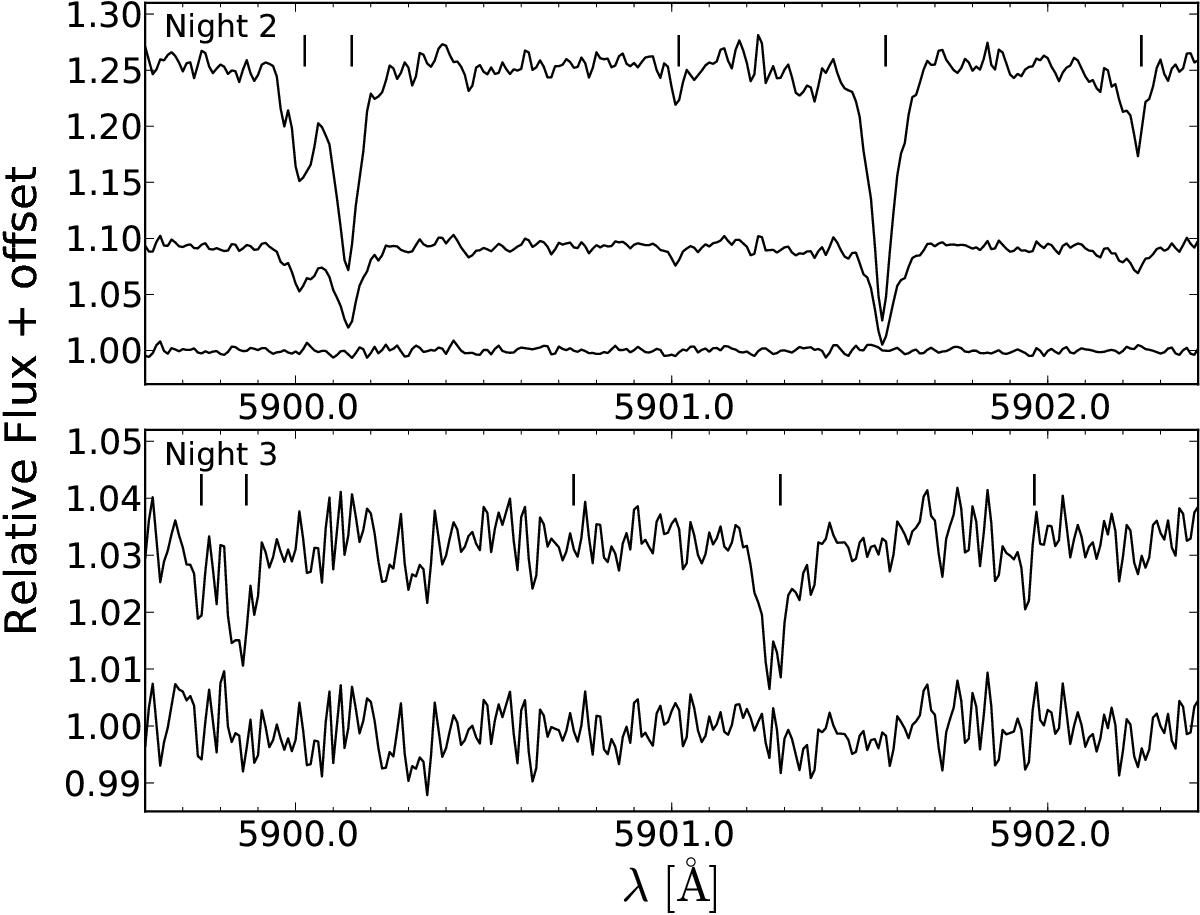Fig. 1

Example of the effect of the terrestrial atmosphere on exoplanetary transmission spectra. This shows the importance of a precise telluric correction. Upper panel: calculated telluric spectrum T(λ) (top), transmission spectrum without any correction (middle), and transmission spectrum with the telluric correction (bottom) for night 2. The telluric lines dominate all features in the uncorrected transmission spectrum. Lower panel: transmission spectra with telluric corrections already performed for night 3. After we apply the telluric correction described in Sect. 2.3 (airmass effect) we obtain a transmission spectra with weak telluric line residuals (top). Since residuals of telluric lines are still visible, we apply a second telluric correction (correction for features due to water column variation, see Sect. 2.4). This enables us to obtain a transmission spectrum corrected for the effect of the terrestrial atmosphere (bottom). Note the different vertical scales. Some evident telluric lines are emphasized with vertical lines. The telluric lines are shifted from one night to the other because the spectra refer to the solar system barycenter rest frame and were not observed at the same barycentric terrestrial radial velocity.
Current usage metrics show cumulative count of Article Views (full-text article views including HTML views, PDF and ePub downloads, according to the available data) and Abstracts Views on Vision4Press platform.
Data correspond to usage on the plateform after 2015. The current usage metrics is available 48-96 hours after online publication and is updated daily on week days.
Initial download of the metrics may take a while.


